
- This event has passed.
Picasso, Lydia & Friends, Vol. V
13 September, 2024 - 3 November, 2024
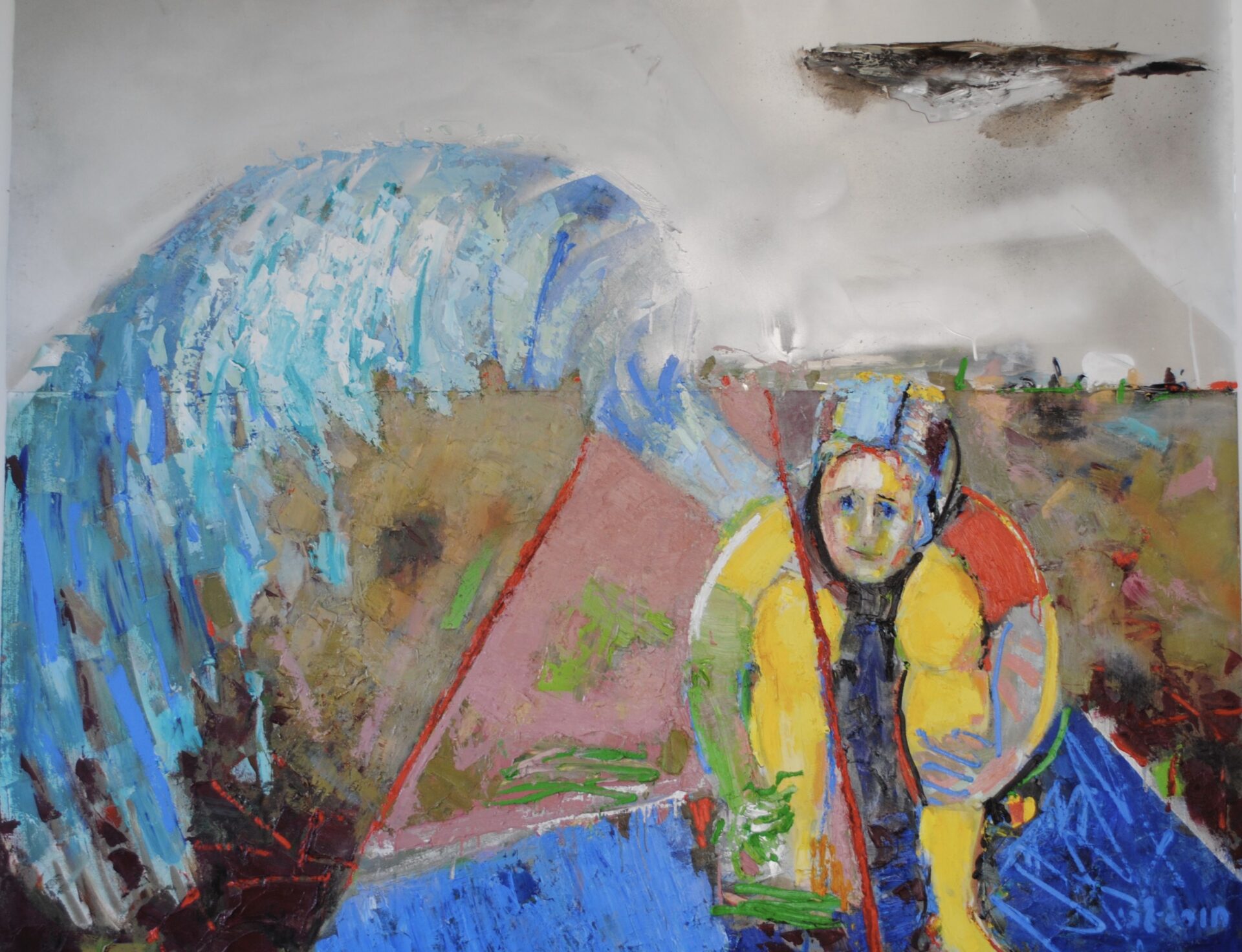
Les Yeux du Monde proudly presents the fifth installment of an exhibition series orchestrated to honor the memory and scholarship of acclaimed Picasso scholar, beloved former professor of Modern Art at the University of Virginia, and sublime painter, Lydia Csato Gasman.
The exhibition features work by both Lydia Gasman and Pablo Picasso, the artist at the center of her scholarship, along with eight other contemporary artists whose work or thinking they inspired: William Bennett, Anne Chesnut, Dean Dass, Rosemarie Fiore, Sanda Iliescu, Megan Marlatt, David Summers, and Russ Warren. A portion of the proceeds from this show will benefit the Lydia Csato Gasman Archives for Picasso and Modernist Studies, the non-profit organization that LYDM Founder Lyn Bolen Warren and Art Historian Victoria Beck Newman co-founded to preserve and disseminate Gasman’s scholarship.
Lydia Gasman’s groundbreaking Ph.D. dissertation, Mystery, Magic, and Love in Picasso: Picasso and the Surrealist Poets, 1925-1938 revolutionized the thinking around Picasso’s art. It was reverentially reviewed in The New York Review of Books by Picasso biographer, John Richardson, who noted, “Dr. Gasman did more to unlock the secrets of the artist’s imagination than anyone else.”
In her obituary for Gasman in The New York Times, celebrated art critic Roberta Smith praised Gasman’s contributions to the field and remarked:
“Fluent in several languages and equipped with a formidable memory, Dr. Gasman redefined Picasso studies. Most scholars had either analyzed Picasso’s art purely in terms of formal innovations and aesthetic progress or offered one-dimensional readings of his work in relation to his life story. Dr. Gasman found a middle way.
One of her more sensational achievements was to track down Marie-Thérèse Walter, the great love of Picasso’s life, in the south of France in 1972 and, over a period of several days, to conduct the frankest, most detailed interview about their life together.
But Dr. Gasman’s most far-reaching accomplishment was to tie the imagery of Picasso’s paintings to the life of his mind: his reading (especially the poetry of the Surrealists), his writings and notebook jottings, his psychic state and interest in all forms of mysticism, magic and ritual.”
Please join us in celebrating the remarkable accomplishments of Lydia Csato Gasman, and the extraordinary art of Pablo Picasso, William Bennett, Anne Chesnut, Dean Dass, Rosemarie Fiore, Sanda Iliescu, Megan Marlatt, David Summers, and Russ Warren.
Lydia Gasman
All of Gasman’s primary interests, preoccupations, fears, experience, and enduring sense of hope coalesce in her monumental painting, The Angel of History. The title is borrowed from Walter Benjamin’s description of Paul Klee’s Angelus Novus in his essay “On the Concept of History.” Written in 1940 as the shadow of fascism spread across the world, Benjamin found in Klee’s hovering angel a way to express his despair:
“A storm is blowing from Paradise; it has got caught in his wings with such violence the angel can no longer close them. This storm irresistibly propels him into the future to which his back is turned, while the pile of debris before him grows skyward.”
In a general sense, Gasman depicts what Benjamin describes. An angel appears in the foreground, her cascading wave of a wing billowing behind her in vivid blues against a gray sky and landscape distinguished only by indeterminate forms underneath an ominous dark mass vaguely resembling an airplane. Remarkably though, this angel advances in space rather than being blown backward in the manner of Klee’s angel. In fact, Gasman has inserted some very specific circumstances of her own history into Benjamin’s schema. The angel with her silvery white hair and bright blue eyes is a portrait of her beloved mother, Sara Csato. Cast as an angel, the colorful mantle she pulls around her is the body of her grandson who died defending Israel, carrying him away from danger just as she did with her son and Lydia’s brother, Yoash when she had him spirited out of their native Romania during World War II. Romania, allied with the Axis powers, was bombed by the Allies and the airplane shape in the upper background may be a reference to the bombers flying over Gasman’s childhood home there. Her riveting lectures on Picasso’s Guernica and related war-time works often referenced her own experience of the terror wrought by bombing raids and especially by the whistling sound of explosives dropped from above–the traditional seat of heaven–as she and her family fled to shelters in the night. Underlying her investigation of Picasso’s paintings, drawings, and writings during World War II in her book, War and the Cosmos, was her brave quest to interrogate, understand and vanquish the evil they both witnessed. Knowing something of these circumstances might lead us to interpret The Angel of History as a bleak work, but it is ultimately about courage and hope. Sara was always a figure of love, comfort, and admiration for Lydia and in painting her as an angel in a perilous universe she may well have been thinking of Benjamin’s summation of Klee’s inspirational subject:
“The angel survives amid catastrophe, powerless but undefeated.”
Pablo Picasso
Printmaking was an integral part of Pablo Picasso’s prodigious artistic achievement. Beginning in 1904 with the Saltimbanque Suite, a series of etchings depicting circus performers, and culminating in 1972 with his Series 156, featuring an extraordinary profusion of autobiographical elements, Picasso created prints as a way of exploring his ideas and thoughts in a metamorphic way. Often his subjects were concurrent with those of his paintings and sculptures but the print medium and the innovative liberties he took with it, gave him a unique flexibility and fluidity in expressing his thoughts and feelings. As he famously said, “The movement of my thought interests me more than the thought itself.”
Modèle, Tableau et Sculpture (Model, Painting and Sculpture), 1933 (March 21)
Trois Femmes nues et une Coupe d’Anémones (Three Nudes et a Bowl of Anemones), 1933 (April 6)
Picasso’s preoccupations during particular moments of his life are so beautifully and sensitively revealed in the prints included in Lydia, Picasso, and Friends. Modèle, Tableau et Sculpture of 1933 is from the Suite Vollard, a series of 100 prints made by Picasso in collaboration with the master printer Roger Lacourière. The simplicity of Picasso’s line in this work belies its conceptual sophistication: Picasso’s print is self-referential—an artwork whose subject is art as both painting and sculpture—and also about the artist and muse who make and inspire them. Commissioned by the art dealer Ambroise Vollard and very loosely based on Honoré de Balzac’s Le Chef-d’oeuvre inconnu (The Unknown Masterpiece) many of the works celebrate Picasso’s love for his young mistress Marie-Thérèse Walter whose features and physiognomy inspired the neoclassical style in which the prints are conceived. Picasso’s relationship with Marie-Thérèse coincides with one of the most profound and complicated periods in his long artistic career and she is generally considered the most important of his muses. Marie-Thèrése is also the model for Trois nues et une Coupe d’Anémones. Picasso compares her to the Three Graces of Greek mythology embodying in triplicate their attributes of beauty, charm, and goodness. Picasso’s representations of Marie-Thèrése as the key to Picasso’s worldview is the focus of Lydia Gasman’s brilliant and ground-breaking study, Magic, Mystery and Love in Picasso, 1925-1938.
Crâne de chèvre sur la table (Table with Goat Skull), 1953
Crane de chèvre sur la table (1953) was also printed by Lacourière and is entirely different in subject, mood, and appearance. Using aquatint to create intense tonal variations and eschewing the lyrical linearity of the Suite Vollard, Picasso depicts a textured, ornate, and strangely animated goat skull through densely woven webs of strokes in contrasting areas of light and dark. The goat figures prominently in Picasso’s iconography and carries multivalent meaning. In scenes derived from Greek mythology Picasso often depicted the animal as a sacrificial offering to the divine and there are intimations of this role in the goat’s skull. It also suggests an association with the ancient concept of memento mori frequently alluded to in still life throughout the history of art. The reference to death can certainly be understood in terms of the horrors of World War II from which the western world was just beginning to recover. Like the bull, the goat has been interpreted as one of Picasso’s artistic alter-egos. The somber presentation of this specific goat’s head may relate to his sense of rejection and sorrow following his breakup with another important muse, Françoise Gilot, who left him in 1953.
Pommes, Verre, et Couteau (Apples, Glass, and Knife), 1947 (March 11)
La Tasse et La Pomme (The Cup and the Apple), 1947 (April 21)
Fleurs dans un Verre, nº 6 (Flowers in a Glass #6), 1947 (April 22)
More prosaic are the quietly poetic print still lifes Picasso made in the 1940s at Fernand Mourlot’s Paris print studio where his experiments with lithographic techniques yielded a whole new body of iconoclastic works. Sometimes forgoing a print brush or crayon, he used his fingers to draw, change, or erase compositions, leaving a physical manifestation of his mark and a literal record of “the movement of his thoughts.” While the goat skull print is filled with a mysterious and profound sadness, the lithographs he made with Mourlot are meditations on everyday elements of daily human life—bread and cutlery upon a table presented in a close and immediate way,a geometricized coffee pot and cup and a simple bouquet of flowers in a vase. All from the 1940s, these simpler arrangements reference ordinary human needs—for nourishment and beauty—and their fulfillment. They can be read as a kind of calming corrective to the undercurrents of anxiety running through many of Picasso’s still-life compositions of the war years.
Dean Dass
Dean Dass was a colleague of Lydia Gasman in the Art Department at the University of Virginia. In this exhibition, Dass presents a work on paper titled Passenger Manifest, which draws on the influence of both Lydia Gasman’s scholarship and Picasso’s drawing, Nude Woman Imploring the Heavens. Like Picasso and Gasman, Dass explores all experience–physical and metaphysical–to understand the mysteries of human existence. About his work, Dass once noted: “The idea of looking up, into the future – that’s the human predicament. And we’re all just passengers.”
About Lydia Gasman, the artist writes:
“I started in the Art Dept. in 1985 and Lydia started in 1990. Despite our many differences I would nevertheless say we had everything in common. As both a developing artist and developing professor, Lydia was really important to me. She encouraged and nurtured everything that I would come to believe was important, namely, that to think and read and write and to draw and paint all went together naturally, and the practice in every event would involve prolonged and passionate discussions. It meant everything to me that an important scholar like Lydia gave me permission as an artist to read and talk about the world outside the studio. Our offices were at opposite ends of the print studio in old Fayerweather Hall, 1990-2004, and Lydia often strolled through the shop while we were working. Over these years I came to understand our print studios as ateliers. Our spaces were studios – places to work filled with simple printing presses; we’re in a very old greasy machine shop. But these press rooms are also an undergraduate chemistry lab; we’re etching copper. Is that really safe? And primarily, we have gathered there to talk, and to talk about all of our other classes throughout the humanist studies of the liberal arts. I suppose it is accurate to say it took a long time for me to understand that Lydia was modeling all this for us.
In the time period in question, 1990 through 2004 – when the Studio Program moved out and Fayerweather Hall was renovated for Art History, themes in both my own work and in the readings and assignments, so-called, that I provided for my students were primarily Jungian. Or I would use his cross-cultural approaches to symbols and imagery applied to themes derived from folklore. But of primary importance, I would say, Is that we learned to think history itself as symbolic form. Lydia’s innovative scholarship linking Picasso’s images and texts helped us see that our task is to create metaphoric languages from our own times, our histories, and try to come to terms in that way. One of her later publications explored the topic of “War and the Cosmos.” Her topic created for me a constellation of influences that continue to resound in my recent exhibitions. To say war and cosmos together is to create a metaphor. I trace the conceptual influences surrounding my shadowy Pilot/Passenger protagonists directly to Lydia’s scholarship. To manifest is to leave everyday chronos for kairos. Thank you, Lydia.”
Rosemarie Fiore
Rosemarie Fiore studied under Lydia Gasman at the University of Virginia and credits Gasman with significantly influencing her life and work. Gasman was the first to teach Fiore about the Surrealist artist, Wolfgang Paalen, and his technique, fumage, in which candle smoke was used to paint. This discovery ultimately inspired Fiore’s Smoke Paintings, which she creates leveraging tools she has built to harness smoke expelled from firework canisters, and layering this smoke residue with acrylic paint and, at times, pigmented ground.
About Gasman, Fiore writes:
“I am fortunate because I was both a student and assistant to Lydia. She was a real artist and generous mentor. Her life-long devotion to research and teaching fed her painting. She processed her research through her painting and her painting through her research. At times she used her own work to explain profound concepts related to Picasso, Foucault, Kiefer, Apollinaire etc. She viewed drawings by Picasso with razor sharp vision fascinated by his quick sketches on random napkins and discarded scraps of paper. To her, these works were especially magical. They were like cryptic star charts and she earnestly tried to decode them. She explained how every dot, line and scribble was imbued with meaning and intention. It all connected and made perfect sense because when you were a student of Lydia, you became a student of the cosmos.”
Russ Warren
Lydia Gasman and Russ Warren shared a close friendship. Both college professors–Gasman taught Art History at the University of Virginia and Warren led the Studio department at Davidson College–they had many mutual intellectual interests and a profound love of Picasso’s art. Gasman once referred to a series of black and white “psychoanalytical portraits” painted by Russ Warren in the early aughts as “brilliant distillations of Picasso.” For this installment of Picasso, Lydia & Friends, Warren returns to black and white portraits, this time in a 40 x 120 inch triptych entitled: FACES.
About Picasso and Lydia Gasman, Warren writes:
“My debt of gratitude belongs to my mother, who decorated my room with Picasso posters while I was away at camp. The images from Mandolin and Guitar by an Open Window haunts me to this day. I left home at an early age and found myself on a driven search for the original, which I found at the MET. I was blown away by the scale, color, and magnetism. I’ll never forget the experience, not knowing that Picasso’s charm would be easy to copy yet impossible to duplicate. He was a great teacher for an open mind and impossible for a closed one. Picasso’s line, form, rhythm, mark and color, scale, and humor are forever my teacher.
Considered “old hat” by my critics and “forceful” by my friends, I finally met my match when Lyn Bolen Warren introduced me to Lydia Gasman. In Lydia, I finally met my aesthetic soulmate. Her knowledge of Picasso was unsurpassed.
Picasso’s painting, prints, drawing, sculpture, poetry and monumental designs grasped an entire century like no other. Lyn Bolen Warren and Vicki Beck Newman together with Lydia were a modernist powerhouse. I was finally surrounded by like-minded Picasso enthusiasts. Lydia with the entire 20th century, Vicki with Picasso’s Golden Years, and Lyn with her modern dance created a modernist’s dream.
My passion for Picasso might never have taken root, had it not been for my mother’s decorating zeal. Thanks, Mom! And thank you, Vicki, for bringing Dora Maar back to life, and Lyn, for keeping Picasso’s choreography in our hearts.”
Sanda Iliescu
Sanda Iliescu and Lydia Gasman were colleagues as faculty at the University of Virginia, and also both Romanian-born artists living and working in America. For this exhibition, Iliescu shares a series of ink drawings on paper entitled Angels. In these lyrical but also careful and contained renderings, Illiescu, like Gasman in The Angel of History, seems to invoke Paul Klee’s Angelus Novus and the predicament of the sacred in the modern world.
About Lydia Gasman, the artist wrote:
“Fearlessness. Freedom. Exuberance. These are some of the qualities that characterize the working methods of Lydia Gasman and Pablo Picasso. She tenaciously broke boundaries between traditional disciplines such as art history, artmaking, and philosophy, and she wrote, painted, and lectured with fearless exuberance. He broke the standards of Western realistic representation and continually reinvented his way of painting, moving nimbly from abstraction to naturalism. They both worked with what I’d like to call “elan,” a Romanian word—both Lydia and I were born in Romania—that describes dynamic, fluid, and joyful actions.
While “elan” is what I always hope to have when I paint, draw, or make collages, I confess it is on occasion difficult to achieve. I become very cautious. I doubt what I am doing, and I am tempted to return to what I already know, or what is acceptable, or conventional, or safe. It is at such moments that I often think of Picasso and Gasman.
When I first began drawing angels in 2019, I remember being excited and feeling bold: although these drawings did not resemble anything I had done before, they flowed from my hand naturally and seamlessly. The finished drawings are delicate, minimal, and somehow strange. But this strangeness was necessary to create the mood I wished to convey—the sense of quietness, simplicity, and child-like serenity. Still, I sometimes begin to ask questions. Why was I being so inconsistent with my other work? Why the minimal, “barely there” manner—only very thin and sparse black lines? And why angels? Last year, I was unsure of myself and briefly set aside the Angels project. Then, one day, I came across this quote by Henri Matisse:
“… the artist must never be a prisoner. Prisoner? An artist must never be a prisoner even of himself, a prisoner of a style, a prisoner of a reputation, a prisoner of good fortune.”
The quote made me think of artists I love, among them Pablo Picasso and Lydia Gasman, who were not “prisoners.” They were fearless, free, and exuberant. I returned to my drawings of angels, a project that I continue to pursue today. As I draw, I regain that quality Romanians call “elan”—that dynamism, fluidity, and freedom.”
David Summers
David Summers was a friend and colleague of Lydia Gasman in the Art Department at UVA. For this exhibition, Summers shares his own rendition of Picasso’s 1947 lithograph Pommes, Verre, et Couteau (Apples, Glass and Knife) that is also included in this show among other new oil on panel still life works. Summers, Gasman, and Picasso all seem to recognize that everything we can perceive–objects, light, colors, form, space–lead us toward an always incomplete, always imperfect, but deeper awareness, even understanding, of what we can possibly know in the course of this existence.
About Lydia Gasman, Summers wrote:
“Lydia once told me how wonderful it was to be a beautiful young girl in Venice, and she kept that happy assurance about herself through all her days. Such bright memories aside, her young years were actually filled with the epic darkness of the end of the Second World War, followed by the crushing bureaucratic routines of red Rumania. Lydia herself was one of the two or three most brilliant people I have ever met. She immediately grasped everything she read, heard or saw, and connected it with everything else she had read, heard or seen. These were explosive capacities. Lydia was certainly also the most passionate person I have ever met, and after escaping from Romania she seemed bent on reclaiming the years she had lost. What if she had been young in Paris in the Banquet Years, the first decade of the 20th century? She had been trained as a painter in Rumania, but she loved Picasso, who stood for the freedom she had been denied. She devoted herself to the interpretation of Picasso’s surrealism, a subject worthy of her brilliance, a project resulting in her deep meditation on the civilizational catastrophe of 20th century. The spectacle of Lydia’s mind at work, her love of art and her faith in its transformative power, together with the humane concern sharpened by her own life, made Lydia Gasman an inspiring teacher, colleague, and a beloved advisor, as this tribute testifies.”
Megan Marlatt
Megan Marlatt and Lydia Gasman were colleagues in the Art Department at UVA. For this exhibition, Megan Marlatt shares her Bird Book of Hours, a ten-page book of Japanese watercolor and gouache works on paper that move from day to night. As Gasman notes in her writing, Picasso’s artistic menagerie is also full of birds–owls, doves, pigeons–which are often of autobiographical, philosophical, socio-political, or symbolic importance.
About Lydia Gasman, Marlatt wrote:
“I once was complaining to Lydia about living in a place where there wasn’t much intellectual stimulation in the community. She laughed it off and said, “It doesn’t really matter where you live, because when you’re doing your work, you’re ‘up there.’” And she pointed to the sky. Knowing what little I did about her life and the difficult places she had lived, it was both humbling and liberating at the same time.”
About her Bird Book of Hours, Marlatt wrote:
“I began this book after returning from Belgium in 2018, where I had been studying carnival culture and the work of James Ensor under a Fulbright Scholarship. I’ve always enjoyed the different sizes and quality of European paper, so I purchased this blank book in Brussels, thinking it was a portfolio of loose papers. It was only when I got it home that I realized it was a bound book. I immediately felt obligated to utilize it as such.
Later that summer of 2018, I took it with me to Mountain Lake Biological Station in Giles County, Virginia. I have been leading an artist residency there since 2010 with my colleague, Amy Chan, and it was my turn to head the residency that year. Each time I had visited MLBS over the 14 years span of residencies; I would create with their bird specimen collection. In 2018, I began painting my Bird Book of Hours.
The MLBS bird collection is a hundred years old. Snuggly situated in a large flat file cabinet, one need only pull out the large, flat drawers to see hundreds of taxidermized birds. The smell of moth balls is strong, and the birds must be handled with surgical gloves to avoid the poisons used to preserve them a hundred years ago. One can carefully pick up a flicker or a wren and read the small, handwritten identification tag in fountain pen ink tied to their little feet; “Falls Church, VA, 1896.”
Whichever bird I choose to paint that day is carefully placed under a large glass bell jar for observation. As a painter, I try to bring life back into the mummified birds. Working wet into wet, I endeavor to push the pigmented puddles of paint into a free-flowing form, like the once effortless flights of these ghost birds.
The Bird Book of Hours moves from morning to night, marking out the progressive hours of light in a day. All the pages were derived from my time at Mountain Lake, except for the ninth page. The Twilight with Loons painting was created at Skowhegan, Maine in 2021 during the pandemic, as MLBS was closed for 2 years during that time.”
Anne Chesnut
Anne Chesnut was a friend and collaborator of Lydia Gasman’s for many years, having designed the book cover for Lydia’s War and the Cosmos in Picasso’s Texts, 1936-1940. In this exhibition, Anne Chesnut exhibits the cover artwork that she designed for this book, which prominently features Picasso’s bull, a focal point of Gasman’s academic research, along with other Picasso drawings and text.
About Lydia Gasman, Chesnut wrote:
“While others knew Lydia at the University, where she was a force to be reckoned with; I knew her in the incubator for that vigor, her apartment in downtown Charlottesville. Lydia completely inhabited her space; there were no boundaries between living, studio, and study. The walls served as an easel, gallery, and support for her art and books. The kitchen was both a source of refreshment and an archive for her research. These papers were not solely scholarly but a rich visual collage of colorful annotations made with markers and Post-its.
Lydia’s home was also part salon, not just for peers and students as might be expected, but also for her friends’ children. When developing projects with her, my son was welcomed there as a small child just as were Lyn’s children and anyone who happened by as we worked.
To collaborate with Lydia, on a design project for her publications, was to engage in an enjoyable act of intellectual stimulation and reconsideration for all. Reviewing her paintings or my prints with Lydia was an active process of discovery and rediscovery.”
William Bennett
William Bennett and Lydia Gasman were colleagues in the art department at the University of Virginia. In this exhibition, he shares two works: Anchor to the Stars, and Back-to-Back: Hands to Earth Mother. The former was created during the years in which Bennett and Gasman were helping to shape the study of modern and contemporary art at UVA. Gasman’s interest in the artistic creation of cosmologies and cosmographies finds a visual parallel in Bennet’s sculptures of “star anchors,” “ladders in space,” and animistic “earth mothers.”
About Lydia Gasman, the artist wrote:
“Lydia Gasman was a remarkable mind and a remarkable beauty. I remember her delivering a lecture like a Cabaret singer within the curve of a piano, turning the UVA Campbell lecture hall into a Smoky Jazz club. She loved Picasso but loved the art of the present as well and invited myself and my studio colleagues to lecture to her 20 th century art history course. Her voice was delicious and flowed out of her mouth like the richest chocolate. We all bathed in this exotic sweetness and followed her down the dark mythic rivers of her mind and scholarship where she unearthed the magic, mystery, and ritual at the core of Picasso’s art. She was the living breathing part of the Banquet Years in our midst! Anchor to the Stars, 1986, was created during the Lydia years in the Art Department’s Fayerweather Hall where the magic and mystery of Lydia infused us all.”
Lydia Csato Gasman Archives for Picasso & Modernist Studies
A portion of the proceeds from this exhibition will benefit the Lydia Csato Gasman Archives for Picasso and Modernist Studies, the non-profit organization that LYDM Founder Lyn Bolen Warren and Art Historian Victoria Beck Newman co-founded to preserve and disseminate Gasman’s scholarship.
To learn more about the Archives, visit: www.lydiagasmanarchives.org/
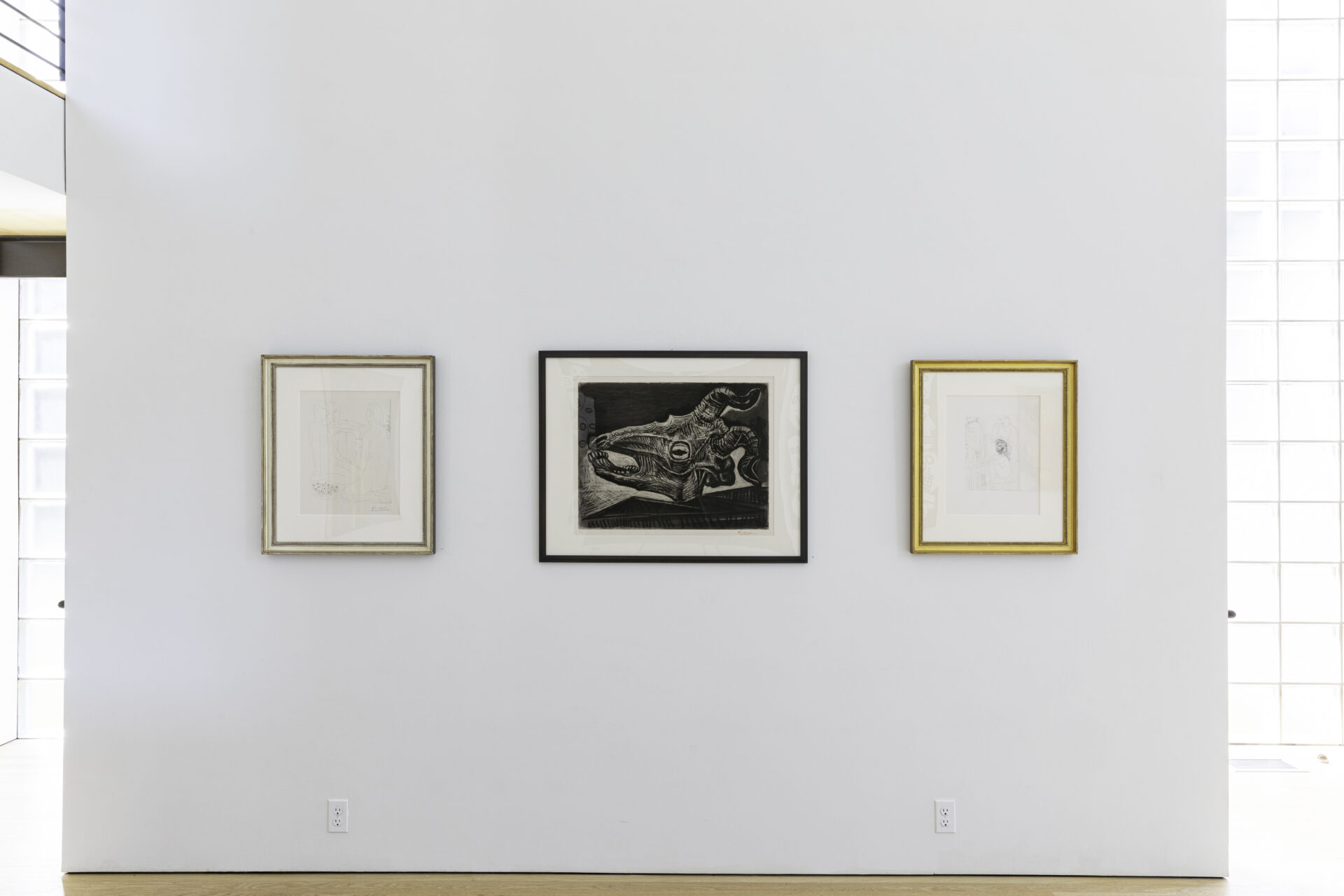
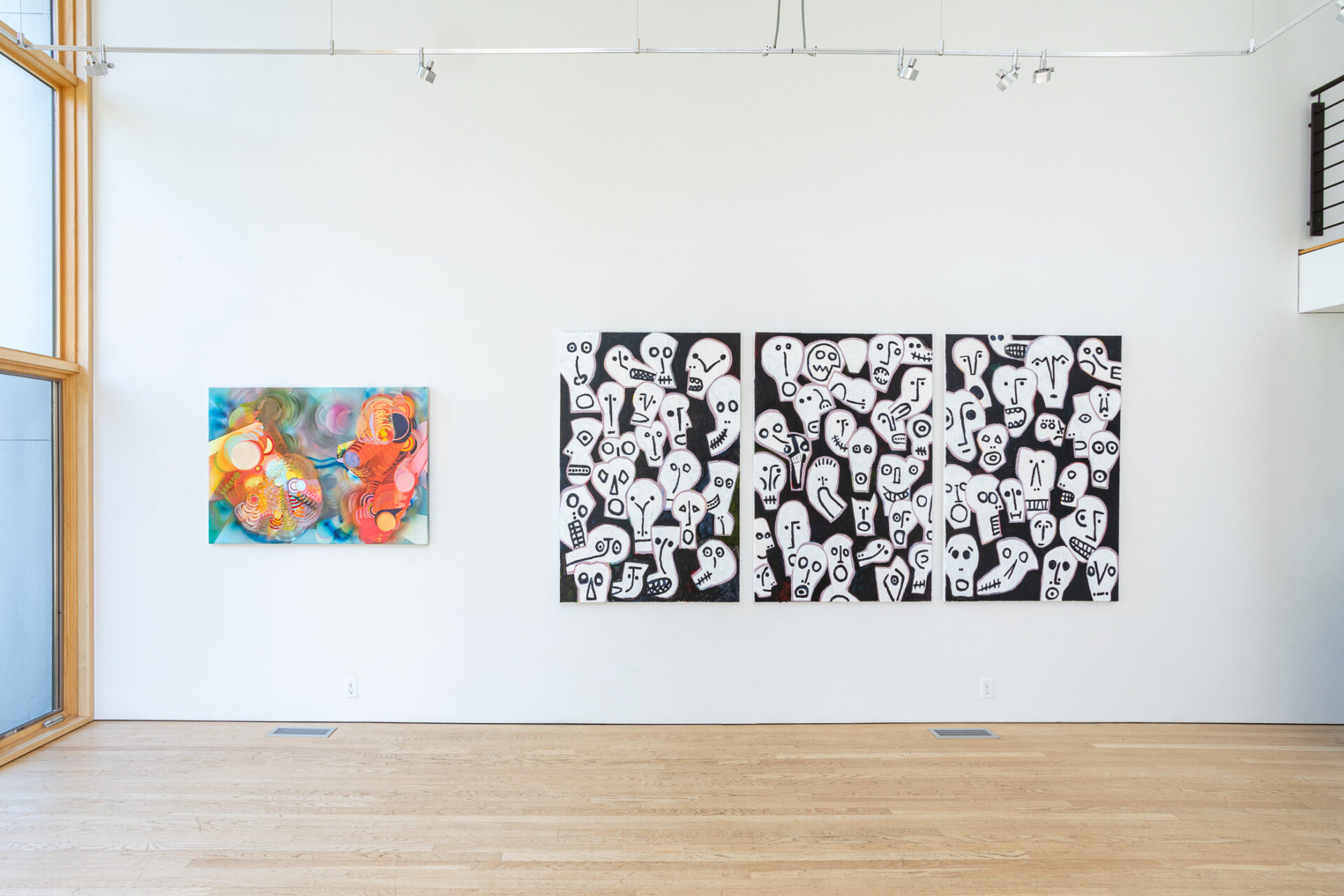
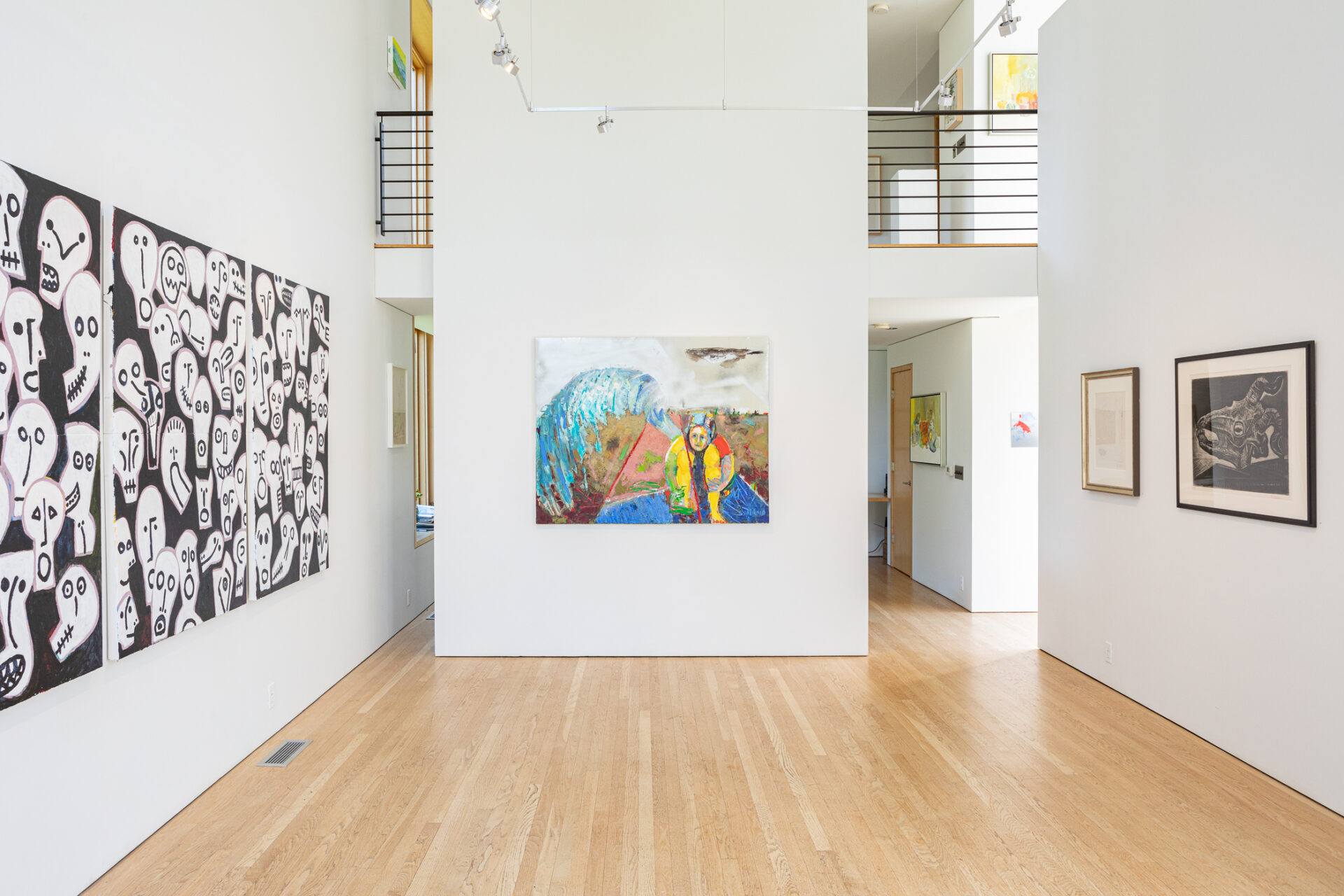
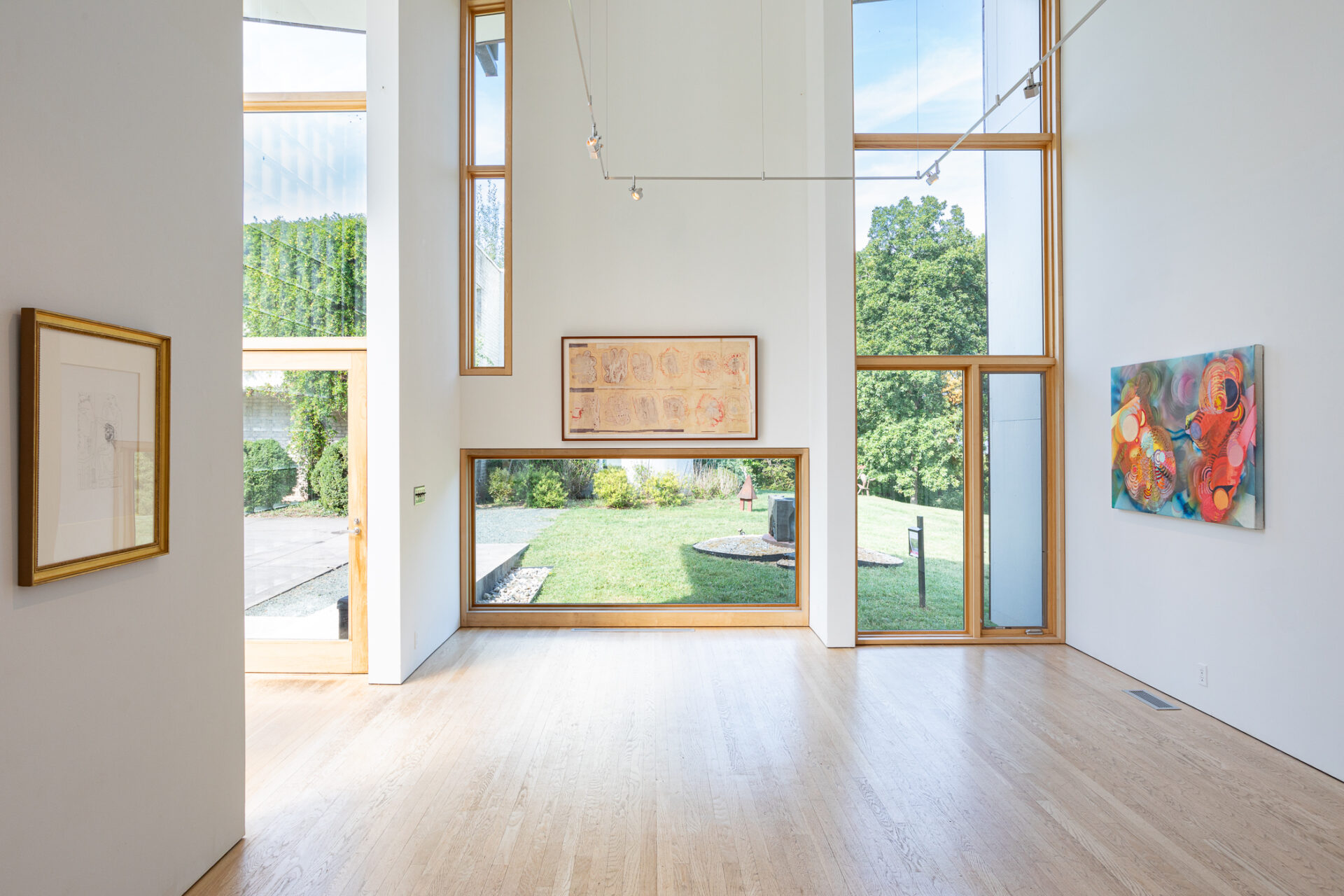
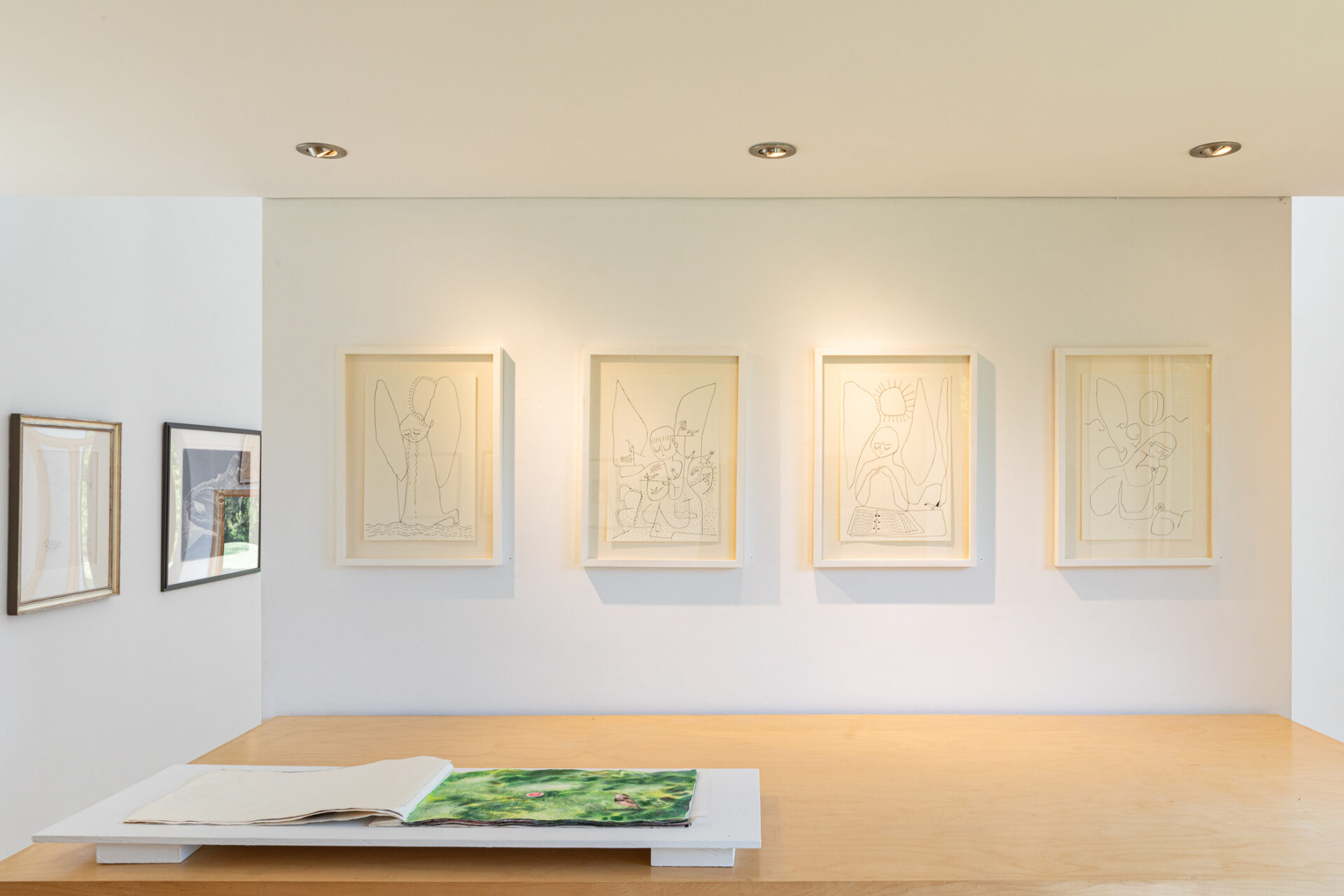
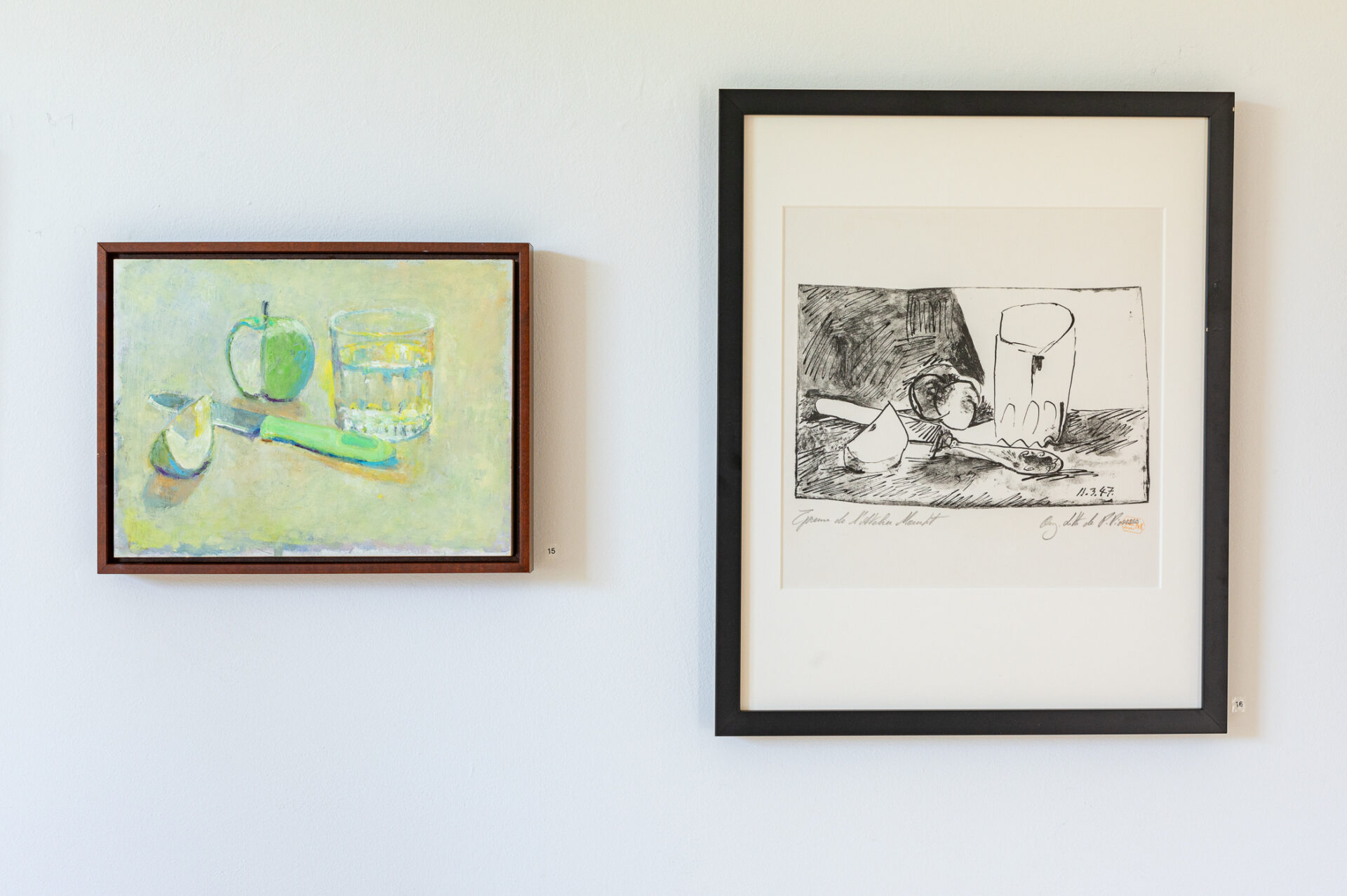
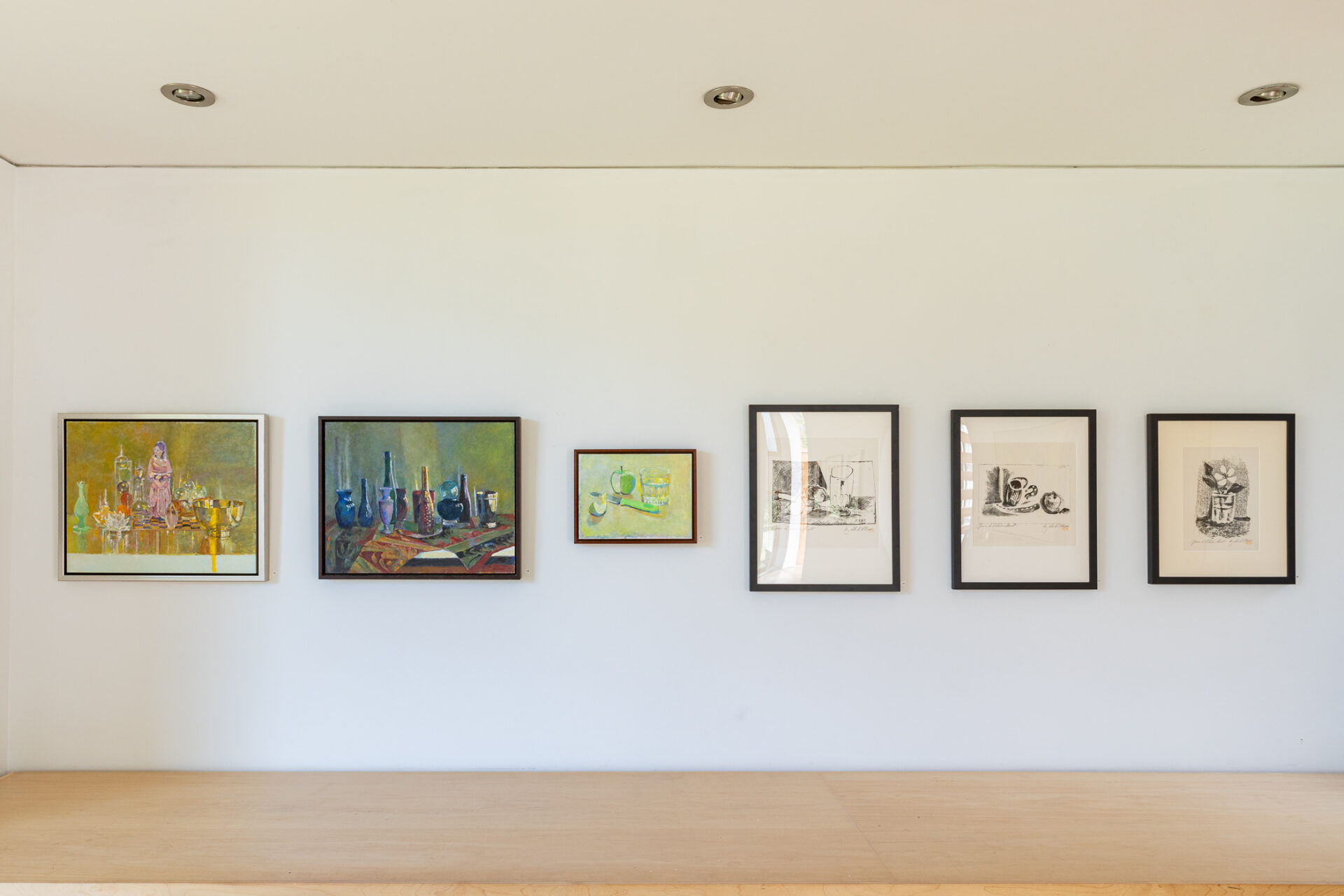
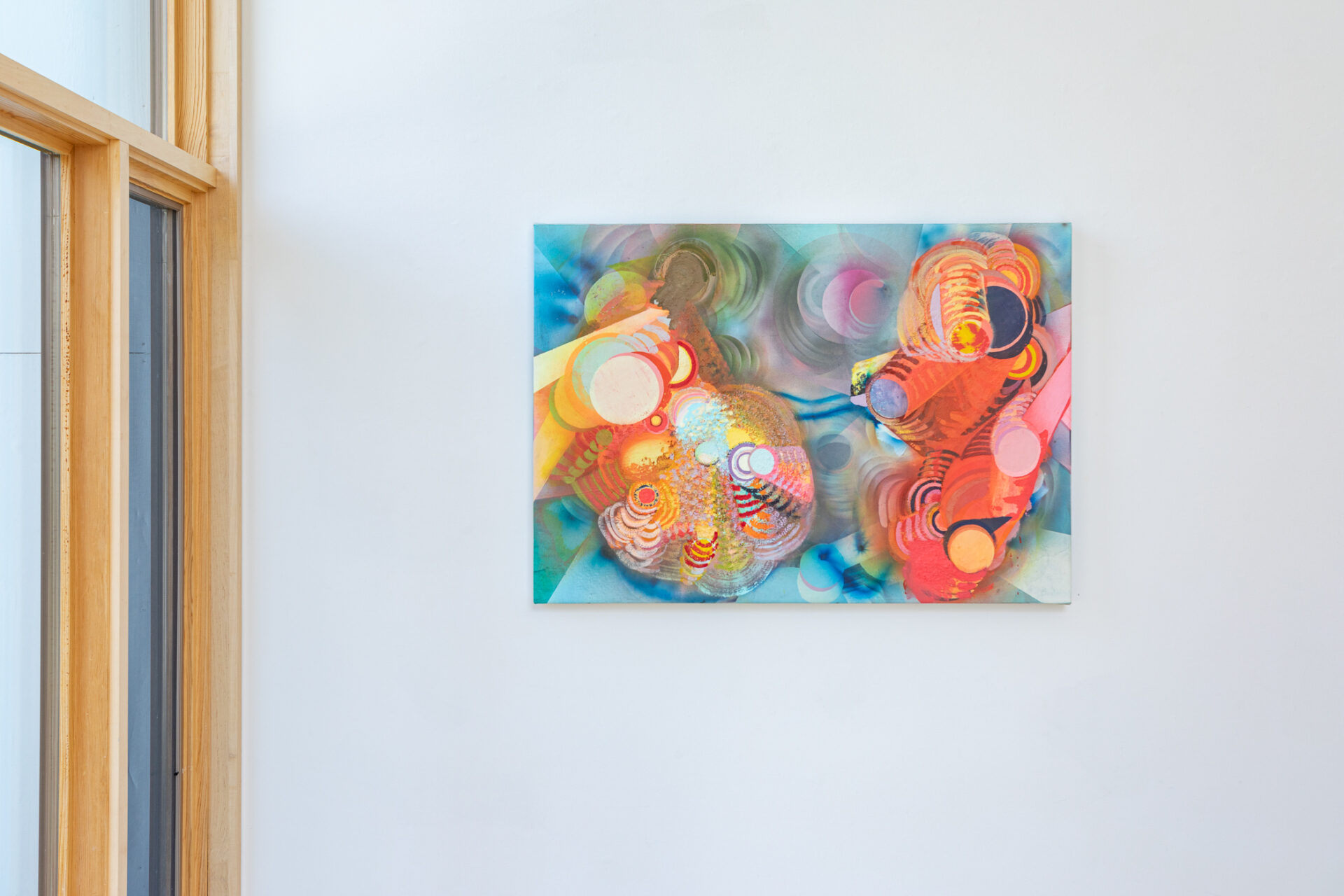
Details
- Start:
- 13 September, 2024
- End:
- 3 November, 2024
Venue
- Les Yeux Du Monde
-
841 Wolf Trap Rd
Charlottesville, VA 22911 United States + Google Map - Phone
- (434)882-2622
Organizer
- Les Yeux du Monde
